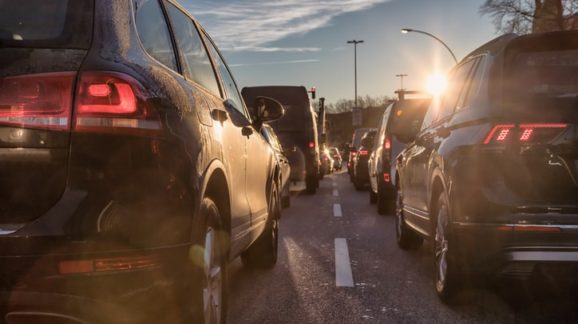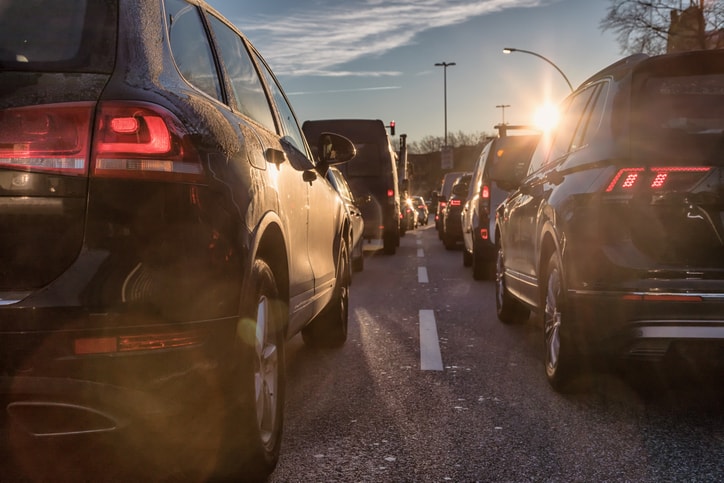All Levels of Government Need a Top-to-Bottom Review of Transportation Policy

Photo Credit: Getty
 Evidence is mounting that mass transit played a major role in spreading COVID-19. According to analytics firm TrendMacro, the only factor “that seems to make a demonstrable difference [in the severity of outbreaks] is the intensity of mass-transit use.”
Evidence is mounting that mass transit played a major role in spreading COVID-19. According to analytics firm TrendMacro, the only factor “that seems to make a demonstrable difference [in the severity of outbreaks] is the intensity of mass-transit use.”
This makes intuitive sense. Mass transit places people in close proximity in confined spaces, often for long-ish periods of time. It’s not just the trains and buses. Train platforms and even booking halls can involve large numbers of people close by one another, even crowded together. One of the first things I worked on at the British Department of Transport was the response to a study of London’s rail services that found dangerous overcrowding at stations in the late 1980s and early 1990s.
Mobility is one of our most important needs, one we often take for granted until it is threatened or lost. The pandemic illustrated that threats posed by exposure to the virus on public transit. That contributed to government and employer mandates to work from home, especially in big cities where transit was the main mode of commuting. Transit ridership crashed as early as March.
As lockdowns lifted, transit ridership has been slow to rebound precisely because scientific evidence urged avoiding crowded spaces with many people. Many employers have maintained work from home policies as a result. In the Washington, DC Metro transit system, for instance, before the pandemic 626,000 rode Metro each day. By the beginning of September 2020 that number was 77,000.
If this continues, there will likely be a funding crisis for transit agencies. If municipal, state, and federal governments respond with bailouts then agencies may stave off disaster—but there are very real questions as to whether or not the money will actually be wasted.
It is quite likely that even if the world were to return to “normal” as a result of a safe and accessible vaccine, then commuting patterns would nevertheless have changed forever as a result of so many employers changing their working conditions to allow working from home.
Moreover, intracity travel may well have changed as well. Employees who are in the office may go to fewer meetings outside the office, and may still be wary of mass transit, for example. In that respect, cities may want to encourage innovative solutions such as bike or scooter sharing. Ridesharing is slightly more difficult given the presence of a stranger in the car, but is likely still preferable to transit. That means that regulations that make ridesharing more expensive are a bad idea in the current circumstances.
All this suggests that the mass transit model adopted by many American cities may no longer be sustainable. Policies that encourage the adoption of the model by other cities, often for environmental reasons, are therefore likely to be inappropriate in a changed world.
The ramifications for highway transportation remain to be seen. It may be that if and when they resume commuting, Americans will feel safer commuting to work in their cars rather than using mass transit. Such a modal shift could lead to much greater congestion, and its attendant problems,) if sufficient people return to the office that way. There are signs that this may already be happening. Policies that aimed at alleviating congestion by encouraging a shift to transit could well be ineffective.
Therefore, municipal, state, and federal authorities need to consider other options. A telework tax, however, is likely to prove disastrous, driving employers out of a city for good while creating severe moral hazard for employers who elect not to pay it by requiring in-office attendance.
What this all suggests is that federal transportation policy, at least so far as it relates to commuting and transit use, requires a wholesale and comprehensive review.
The federal Department of Transportation can show leadership in this regard by beginning a top-to-bottom review of all federal laws that encourage mass transit usage or discourage automobility solutions and report on what changes need to be made. Such a report should pull no punches and not be swayed by considerations like the demands of environmental campaigners (although it should mention them as a factor).
If the world has changed, we need to know that and our policies should be updated to reflect the change. Transportation policy should show the way.